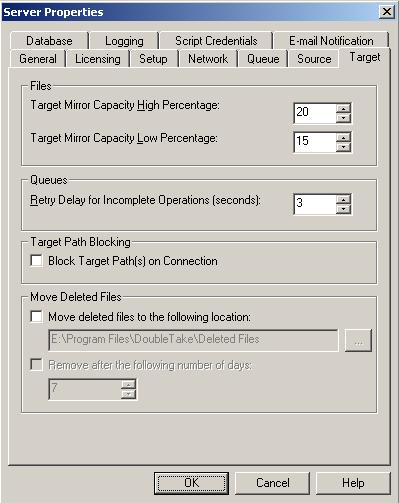

| Note: |
If you are going to use failover, any target paths that are blocked will automatically be unblocked during the failover process so that users can modify data on the target after failover. During a restoration, the paths are automatically blocked again. If you failover and failback without performing a restoration, the target paths will remain unblocked. You can manually block or unblock the target paths by right-clicking on a connection. Do not block your target paths if you are protecting a full-server workload because system state data will not be able to be written to the target. |
| Note: |
If deleted files are moved for long enough, the potential exists for the target to run out of space. In that case, you can manually delete files from the target move location to free space. If you have Ignore Delete Operations enabled on the source, the Move deleted files setting will never be invoked because there will be no delete operations performed on the target. Do not include the Recycler directory in your replication set if you are moving deleted files. If the Recycler directory is included, Double-Take Availability will see an incoming file deletion as a move operation to the Recycle Bin and the file will not be moved as indicated in the Move deleted files setting. Alternate data streams that are deleted on the source will not be moved on the target. Encrypted files that are deleted on the source will only be moved on the target if the move location is on the same volume as the replication set target path. Compressed and sparse files that are deleted on the source will be moved on the target, although the compression and sparse flags will only be retained on the target if the move location is on the same volume as the replication set target path. |